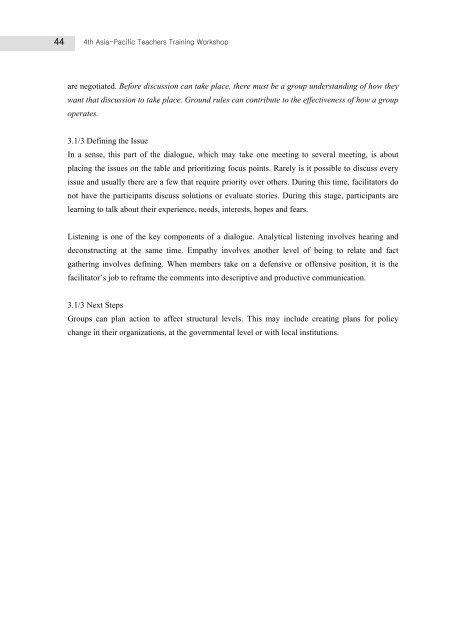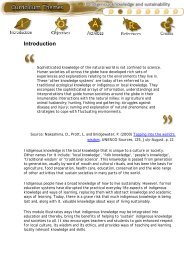INTRODUCTION & PROGRAMME - APCEIU
INTRODUCTION & PROGRAMME - APCEIU
INTRODUCTION & PROGRAMME - APCEIU
- No tags were found...
You also want an ePaper? Increase the reach of your titles
YUMPU automatically turns print PDFs into web optimized ePapers that Google loves.
444th Asia-Pacific Teachers Training Workshopare negotiated. Before discussion can take place, there must be a group understanding of how theywant that discussion to take place. Ground rules can contribute to the effectiveness of how a groupoperates.3.1/3 Defining the IssueIn a sense, this part of the dialogue, which may take one meeting to several meeting, is aboutplacing the issues on the table and prioritizing focus points. Rarely is it possible to discuss everyissue and usually there are a few that require priority over others. During this time, facilitators donot have the participants discuss solutions or evaluate stories. During this stage, participants arelearning to talk about their experience, needs, interests, hopes and fears.Listening is one of the key components of a dialogue. Analytical listening involves hearing anddeconstructing at the same time. Empathy involves another level of being to relate and factgathering involves defining. When members take on a defensive or offensive position, it is thefacilitator’s job to reframe the comments into descriptive and productive communication.3.1/3 Next StepsGroups can plan action to affect structural levels. This may include creating plans for policychange in their organizations, at the governmental level or with local institutions.








